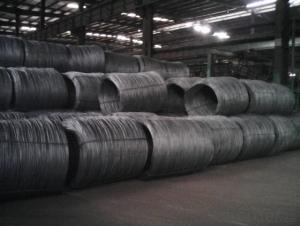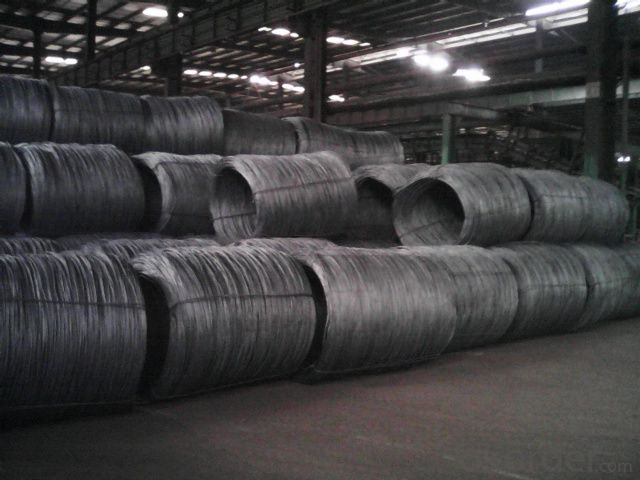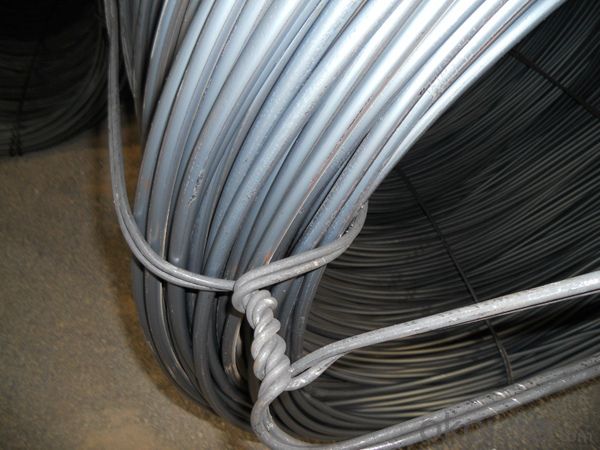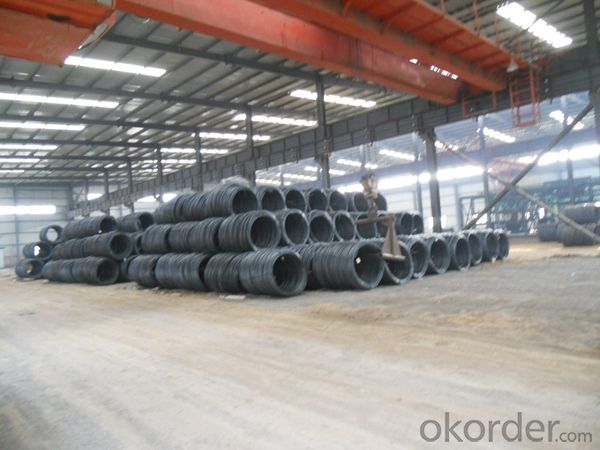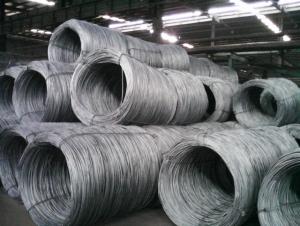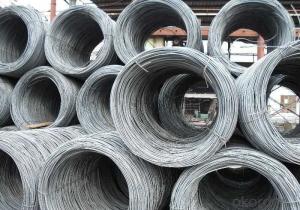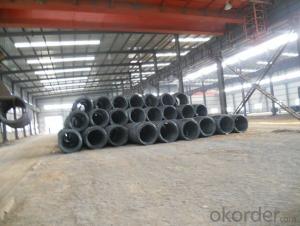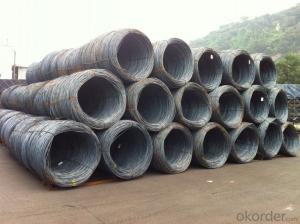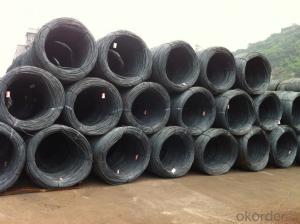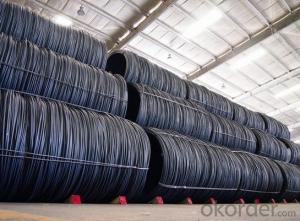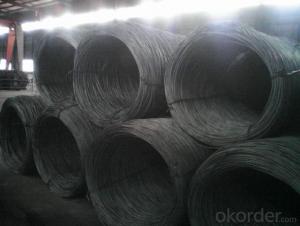Hot Rolled Steel Wire Rods SAE1006B---SAE1018B for Making Nails and Wire Mesh
- Loading Port:
- Tianjin
- Payment Terms:
- TT OR LC
- Min Order Qty:
- 20 m.t.
- Supply Capability:
- 200000 m.t./month
OKorder Service Pledge
OKorder Financial Service
You Might Also Like
Specification
Product Description:
OKorder is offering Hot Rolled Steel Wire Rods SAE1006B---SAE1018B for Making Nails and Wire Mesh at great prices with worldwide shipping. Our supplier is a world-class manufacturer of steel, with our products utilized the world over. OKorder annually supplies products to African, South American and Asian markets. We provide quotations within 24 hours of receiving an inquiry and guarantee competitive prices.
Product Applications:
Hot Rolled Steel Wire Rods SAE1006B---SAE1018B for Making Nails and Wire Mesh are ideal for structural applications and are widely used in construction and manufacturing. Carbon steel wire rod is mainly used for reinforcement of reinforced concrete and welded structure or reprocessed (roberts , nail, etc.) materials, especially used to produce wire drawing, welding electrode, nails, spring, electronic, precise machinery parts and so on.
Product Advantages:
OKorder's Hot Rolled Steel Wire Rods SAE1006B---SAE1018B for Making Nails and Wire Mesh are durable, strong, and wide variety of sizes. They are newly produced by good quality steel billets.
Main Product Features:
· Premium quality
· Prompt delivery & seaworthy packing (30 days after receiving deposit)
· Can be recycled and reused
· Mill test certification
· Professional Service
· Competitive pricing
Product Specifications:
Steel Grade: SAE1006-1018B
Standard: ASTM, GB
Diameter: 5.5mm, 6.5mm, 7mm,8mm,9mm,10mm,12mm,14mm
Type: in coil, coil weight around 2MT
Alloy or Not: Alloy
Technique: Hot Rolled
Place of Origin: China Mainland
Surface: round, no twisted, light and smooth
Grade | Chemical Composition (%) | |||||
C | Mn | S | P | Si | B | |
SAE1006 | 0.03~O.07 | 0.32max | 0.045max | 0.040max | 0.30max | 0.0008min |
Mechanical properties | ||||||
Yield strength(N/mm2) | Tensile strength(N/mm2) | Elongation (%) | ||||
250-280 | 350-380 | ≥32 | ||||
Grade | Chemical Composition (%) | |||||
C | Mn | S | P | Si | B | |
SAE1008 | 0.10max | 0.3~0.50 | 0.050max | 0.040 max | 0.15max | 0.0008 min |
Mechanical properties | ||||||
Yield strength(N/mm2) | Tensile strength(N/mm2) | Elongation (%) | ||||
≥195 | 315-430 | ≥30 | ||||
FAQ:
Q1: Why buyHot Rolled Steel Wire Rods SAE1006B---SAE1018B for Making Nails and Wire Mesh from OKorder.com?
A1: All products offered byOKorder.com are carefully selected from China's most reliable manufacturing enterprises. Through its ISO certifications, OKorder.com adheres to the highest standards and a commitment to supply chain safety and customer satisfaction.
Q2: How do we guarantee the quality of our products?
A2: We have established an advanced quality management system which conducts strict quality tests at every step, from raw materials to the final product. At the same time, we provide extensive follow-up service assurances as required.
Q3: How soon can we receive the product after purchase?
A3: Within three days of placing an order, we will arrange production. The normal sizes with the normal grade can be produced within one month. The specific shipping date is dependent upon international and government factors, the delivery to international main port about 45-60days.
Images:
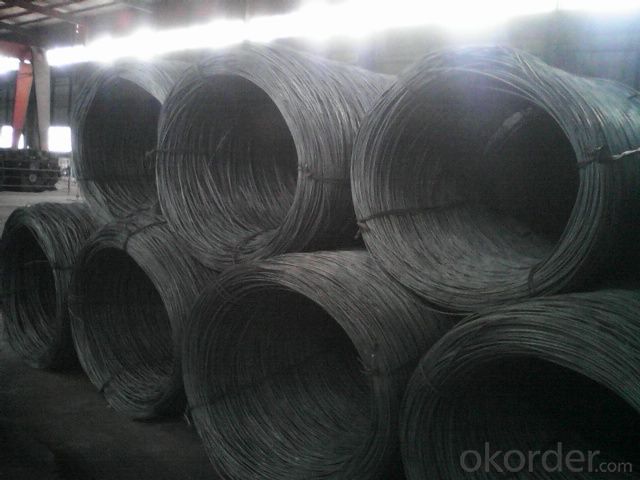
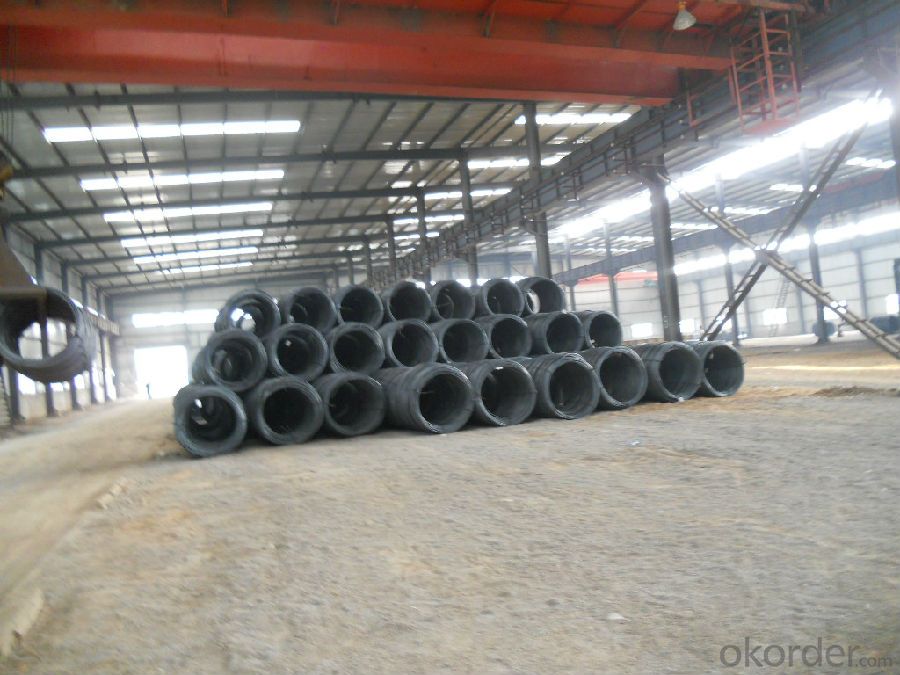
- Q: How is steel wire rod used in the manufacturing of wire for power distribution systems?
- The manufacturing of wire for power distribution systems heavily relies on steel wire rod, a crucial component. This rod, typically made from carbon steel and possessing high tensile strength, is the raw material used to create the actual wire. To begin, the steel wire rod is commonly subjected to a series of processes, including hot rolling, drawing, and annealing, in order to transform it into a thin and flexible wire. During the hot rolling process, the steel wire rod is heated to a specific temperature and then passed through a sequence of rollers to decrease its diameter. This process refines the grain structure of the steel, enhancing both its strength and flexibility. Following this, the wire rod is drawn through a set of dies to further decrease its diameter and increase its length. This drawing process improves the wire's mechanical properties, such as tensile strength and conductivity. A drawing machine is used to pull the wire rod through the dies, resulting in a continuous length of wire. Once the wire is drawn, it undergoes an annealing process. This involves heating it to a specific temperature and then gradually cooling it. Annealing helps to relieve any remaining stresses in the wire, making it more pliable and easier to handle during the manufacturing process. After the wire rod has been transformed into wire, it can be further processed and insulated to meet the specific requirements of power distribution systems. Insulation materials such as PVC or XLPE (cross-linked polyethylene) are applied to the wire, providing electrical insulation and safeguarding against moisture, temperature variations, and physical damage. Ultimately, the insulated wire is utilized to manufacture various components of power distribution systems, including cables, conductors, and overhead lines. These wires play a crucial role in transmitting electricity from power plants to substations, and further distributing it to homes, businesses, and other facilities. In conclusion, steel wire rod is an indispensable material in the manufacturing of wire for power distribution systems. Through processes like hot rolling, drawing, and annealing, the wire rod is transformed into a thin and flexible wire, which is then insulated to meet the specific requirements of power distribution applications. This wire plays a vital role in safely and efficiently carrying electricity over long distances.
- Q: How is steel wire rod used in the manufacturing of wire forms for cable trays?
- Steel wire rod is used in the manufacturing of wire forms for cable trays by being drawn through a series of dies to reduce its diameter and increase its length. This process, known as wire drawing, creates a thinner and longer wire that is then shaped, bent, and welded to form the desired wire forms for cable trays. The steel wire rod provides the necessary strength and durability to support the weight of cables and withstand various environmental conditions.
- Q: How are steel wire rods used in the production of reinforcements for concrete?
- Steel wire rods are used in the production of reinforcements for concrete by being formed into various shapes, such as bars or mesh, that are embedded within the concrete structure. These wire rods provide tensile strength to the concrete, enhancing its ability to resist cracking and withstand external forces. The reinforcements made from steel wire rods also help distribute the load evenly across the concrete, increasing its overall durability and structural integrity.
- Q: What are the different surface defects that can occur in steel wire rod?
- Some common surface defects that can occur in steel wire rods include scale, rust, pits, scratches, cracks, and surface decarburization.
- Q: What are the different annealing processes used for steel wire rod?
- The different annealing processes used for steel wire rod include full annealing, spheroidization annealing, and process annealing. Full annealing involves heating the wire rod to a temperature above its critical temperature and then slowly cooling it to room temperature to soften it and improve its ductility. Spheroidization annealing is a type of full annealing that is specifically used for high carbon steel wire rod to transform its brittle cementite structure into spherical carbides, enhancing its machinability and reducing the risk of breakage. Process annealing, on the other hand, is a partial annealing process that is performed on cold-worked wire rod to relieve internal stresses and restore some of its ductility without affecting its mechanical properties.
- Q: How is steel wire rod used in the manufacturing of wire forms for roller coasters?
- The manufacturing of wire forms for roller coasters heavily relies on steel wire rod. This essential component serves as the raw material from which various elements, including track supports, safety restraints, and structural components, are created. When it comes to roller coaster construction, the high tensile strength and durability of steel wire rod make it the perfect choice. Roller coasters endure significant forces and stresses during operation, such as bending, twisting, and sudden changes in velocity. Due to its exceptional strength and flexibility, steel wire rod can withstand these forces and maintain its structural integrity. To produce wire forms for roller coasters, specific mechanical properties of the steel wire rod, such as tensile strength and ductility, are carefully considered during selection. The wire rod then undergoes a series of stages, including drawing, annealing, and galvanizing. Drawing involves pulling the wire rod through dies to reduce its diameter and increase its length, resulting in the desired wire dimensions. Annealing, a heat treatment process, is crucial to enhance the wire's flexibility and reduce brittleness. This is necessary to ensure the wire forms can endure constant vibrations and movements experienced during roller coaster operation. Lastly, the wire forms are galvanized to provide corrosion resistance. This involves coating the wire with zinc, safeguarding it from environmental elements like moisture and oxidation, thus extending its lifespan. Once the steel wire rod has been processed and transformed into wire forms, it finds various applications throughout the roller coaster. For instance, it is utilized in creating track supports that secure the coaster's rails, ensuring stability and safety. Additionally, it is employed in manufacturing safety restraints like lap bars and shoulder harnesses, vital for passenger security during the exhilarating ride. In conclusion, steel wire rod plays a pivotal role in the production of wire forms for roller coasters. Its exceptional strength, flexibility, and durability make it the perfect material for constructing different structural elements and safety components. Through careful processing and treatment, steel wire rod ensures the safety and excitement of roller coaster riders worldwide.
- Q: What are the main factors influencing the choice of steel wire rod order return policy?
- The main factors influencing the choice of steel wire rod order return policy include customer satisfaction, market demand, product quality, legal requirements, and the company's overall business strategy.
- Q: How is steel wire rod used in the manufacturing of wire mesh gates?
- Steel wire rod is used in the manufacturing of wire mesh gates as it serves as the base material for creating the wire mesh. The wire rod is first drawn through a series of dies to reduce its diameter and increase its length, resulting in a long, continuous wire. This wire is then woven or welded together to form the wire mesh pattern, which is used to construct the gate. The strength and durability of steel wire rod make it ideal for withstanding the rigors of outdoor use and providing security and stability to wire mesh gates.
- Q: How are steel wire rods used in the manufacturing of piano strings?
- Steel wire rods are used in the manufacturing of piano strings as they provide the necessary strength and flexibility required for producing high-quality and durable strings.
- Q: What are the different types of steel wire rod surface defect prevention and mitigation measures?
- There are various methods to prevent and mitigate surface defects on steel wire rods. Some common measures include implementing proper handling and storage practices, ensuring adequate lubrication during the manufacturing process, utilizing effective cooling techniques, employing surface treatment methods like pickling or phosphating, conducting regular inspections and quality control checks, and implementing corrective actions promptly to address any identified defects. Additionally, proper maintenance of equipment, adherence to industry standards and guidelines, and continuous training and education of personnel are crucial in preventing and mitigating surface defects on steel wire rods.
Send your message to us
Hot Rolled Steel Wire Rods SAE1006B---SAE1018B for Making Nails and Wire Mesh
- Loading Port:
- Tianjin
- Payment Terms:
- TT OR LC
- Min Order Qty:
- 20 m.t.
- Supply Capability:
- 200000 m.t./month
OKorder Service Pledge
OKorder Financial Service
Similar products
Hot products
Hot Searches
Related keywords
